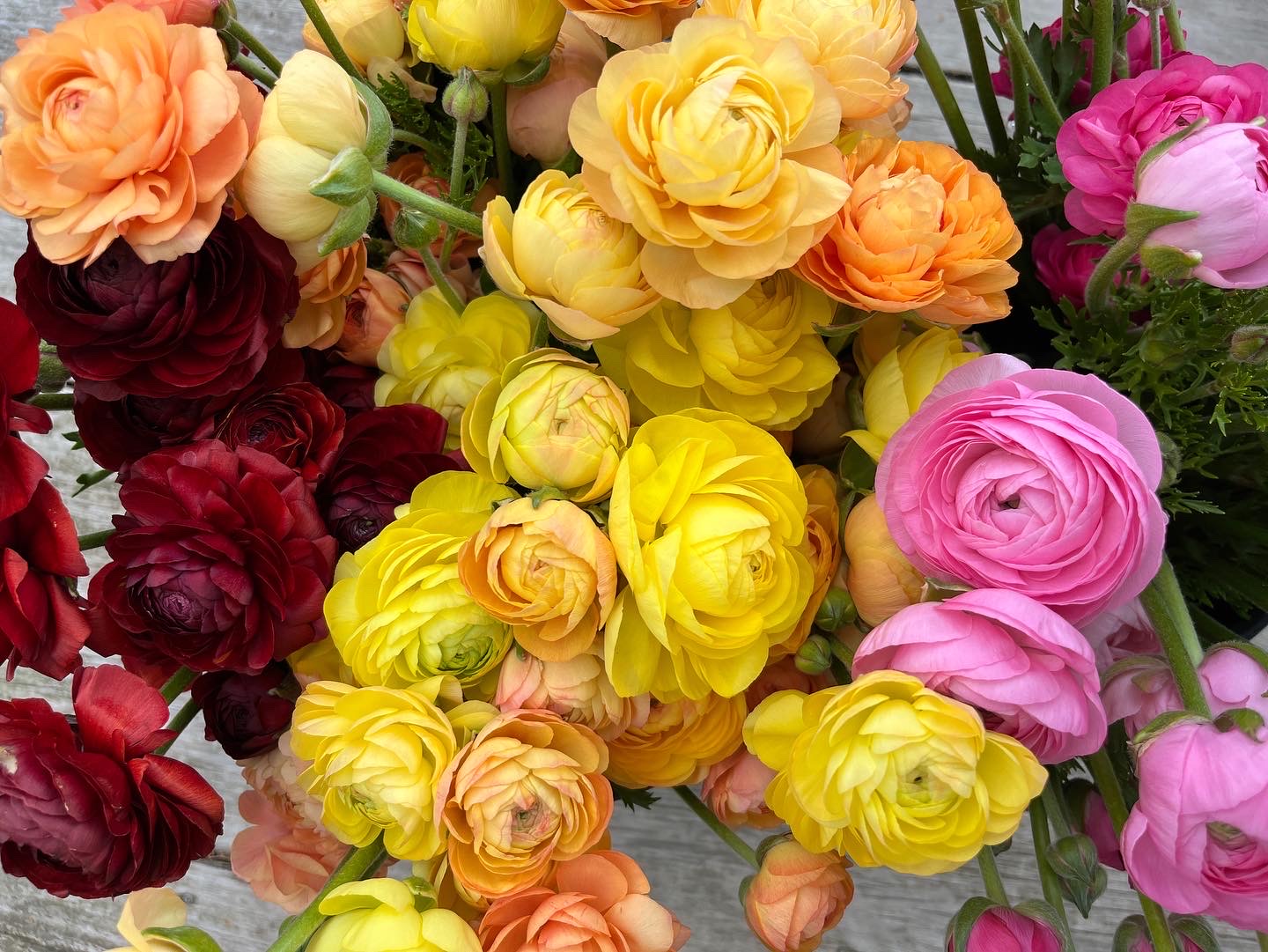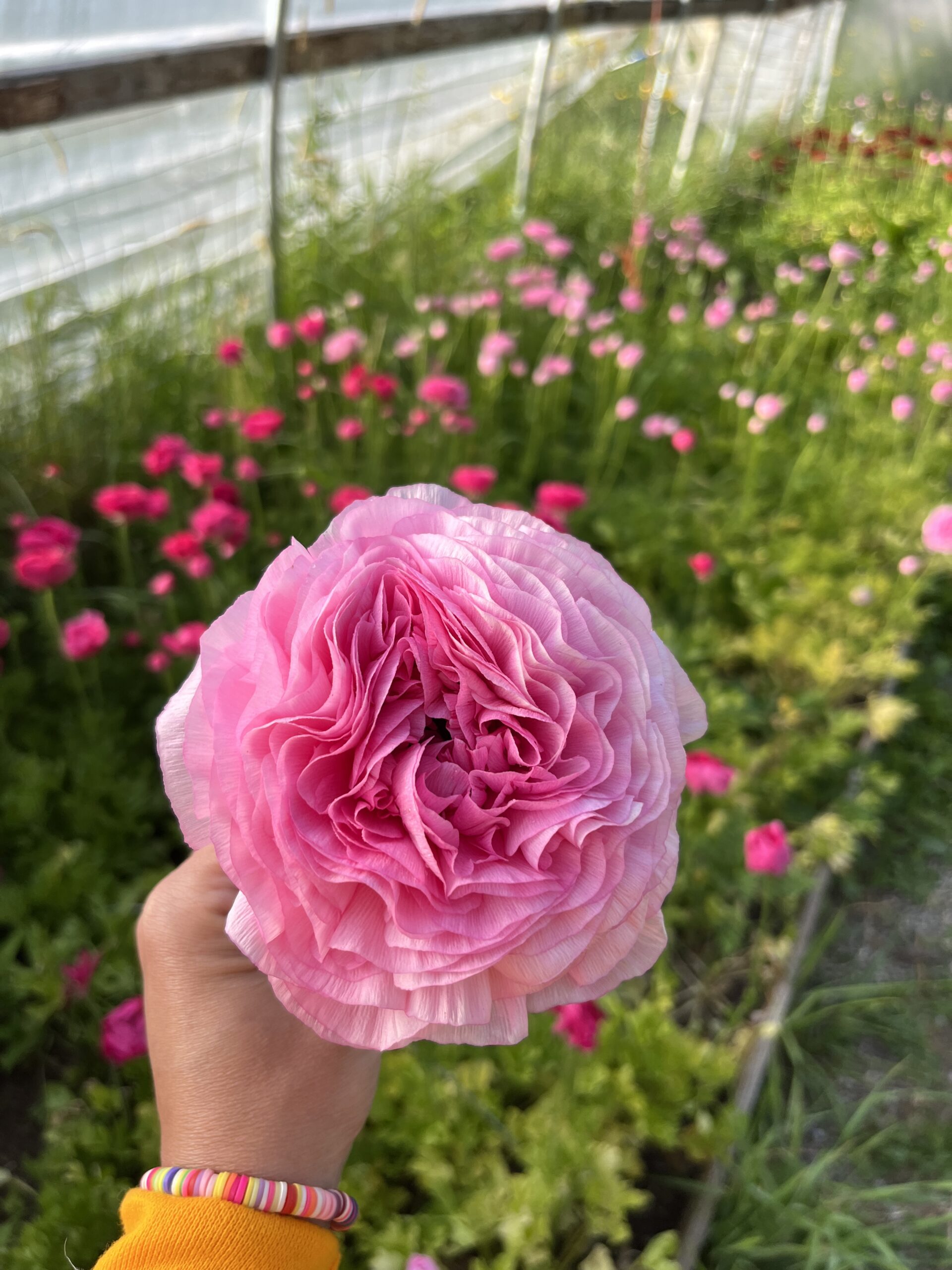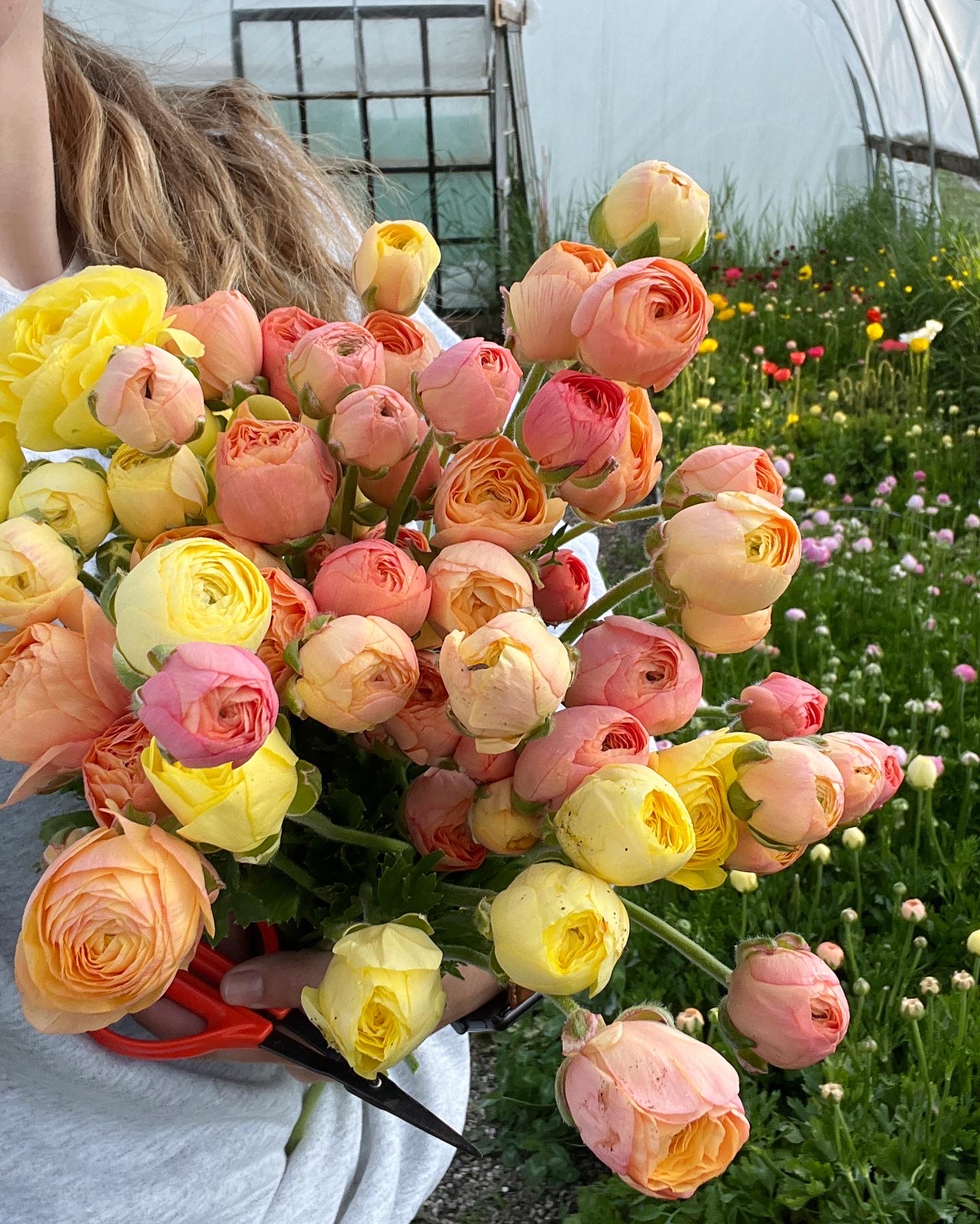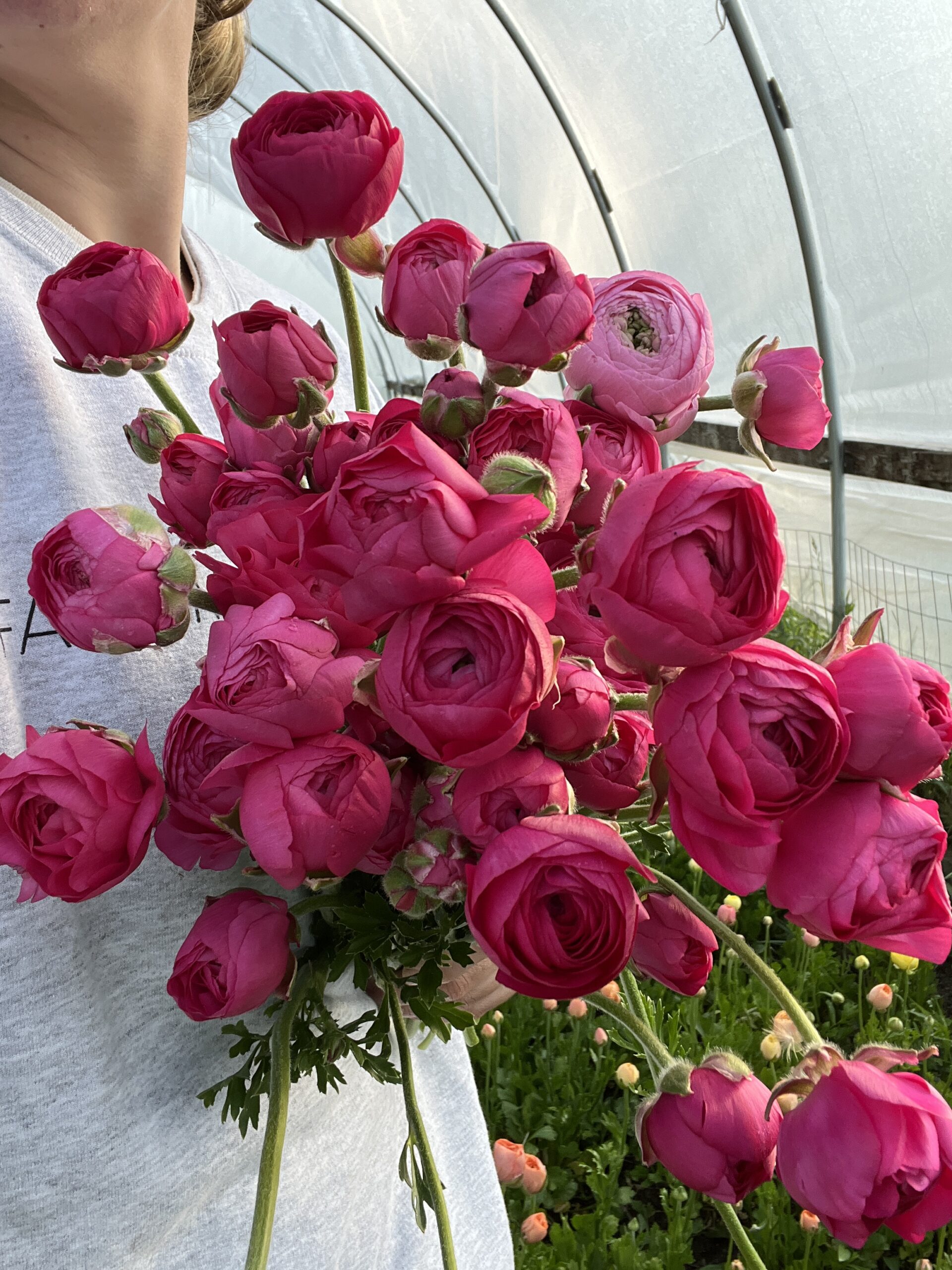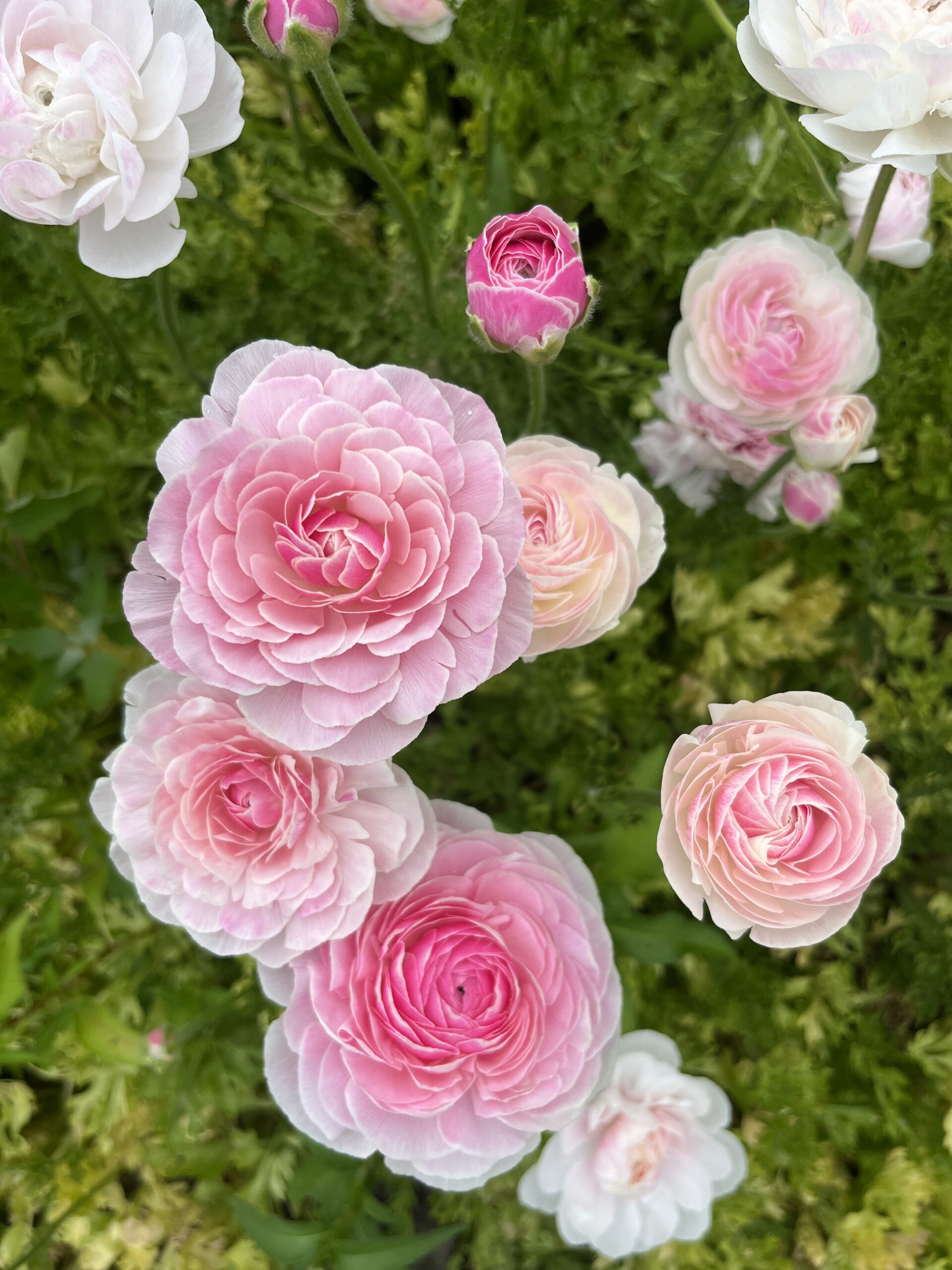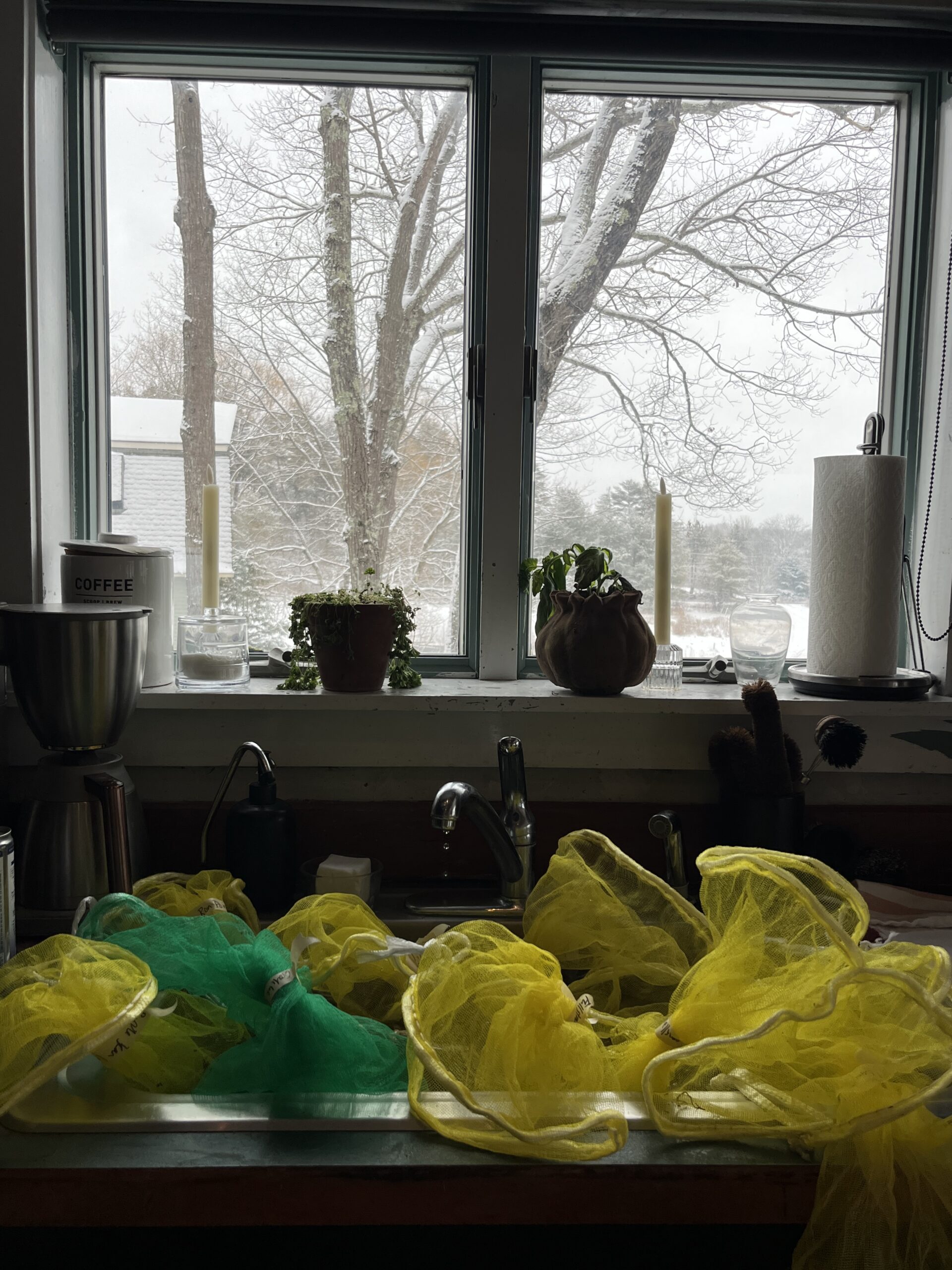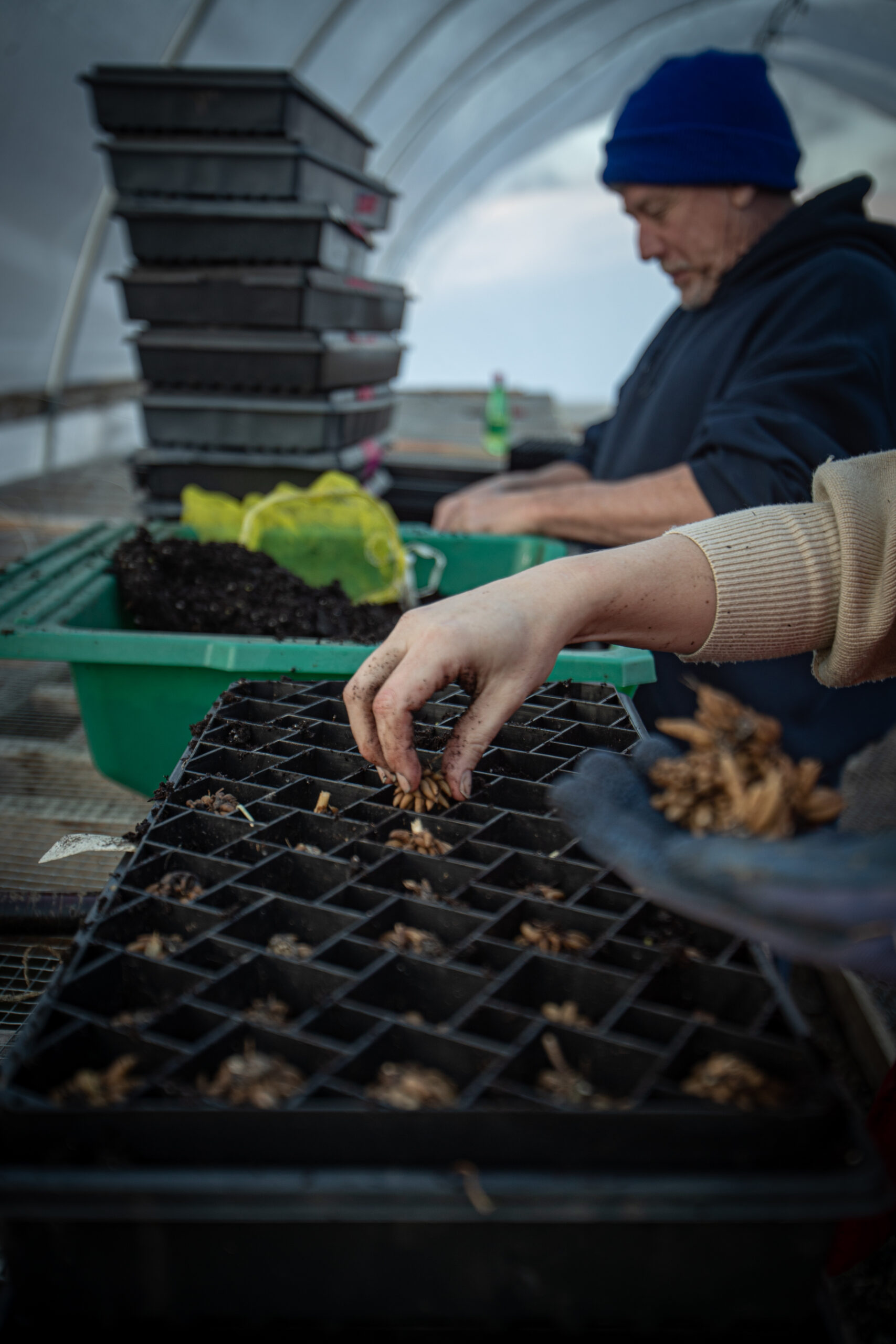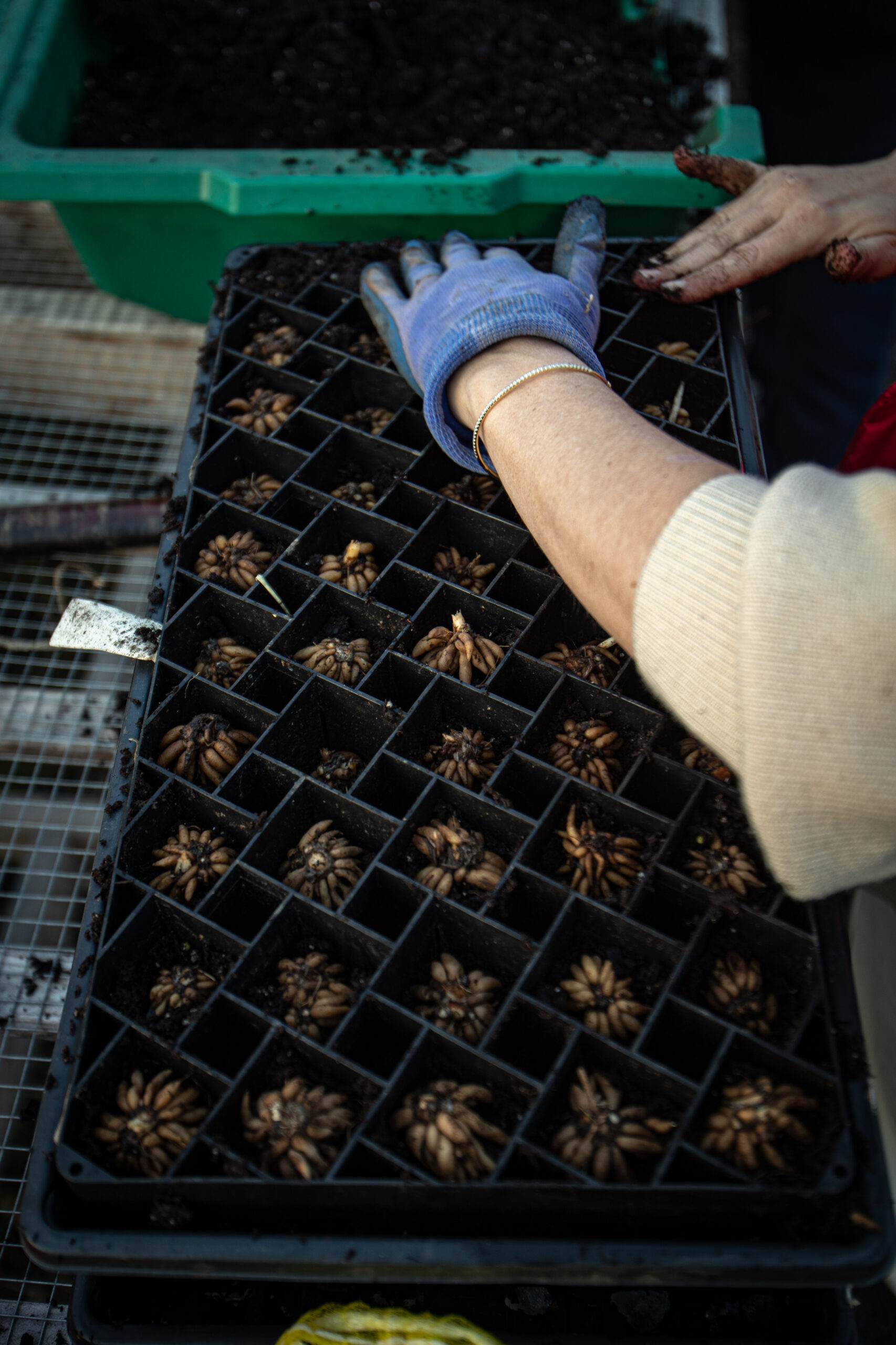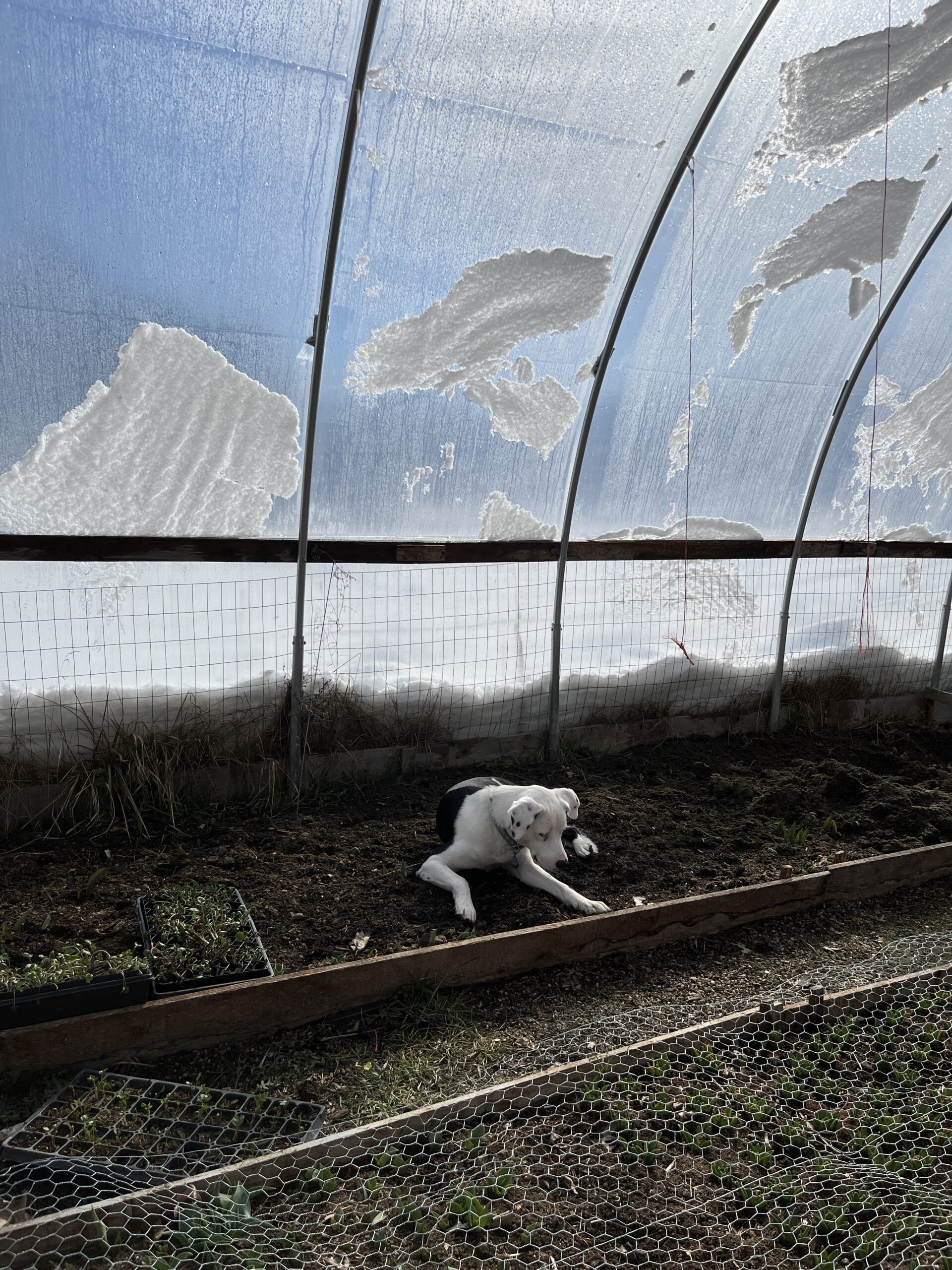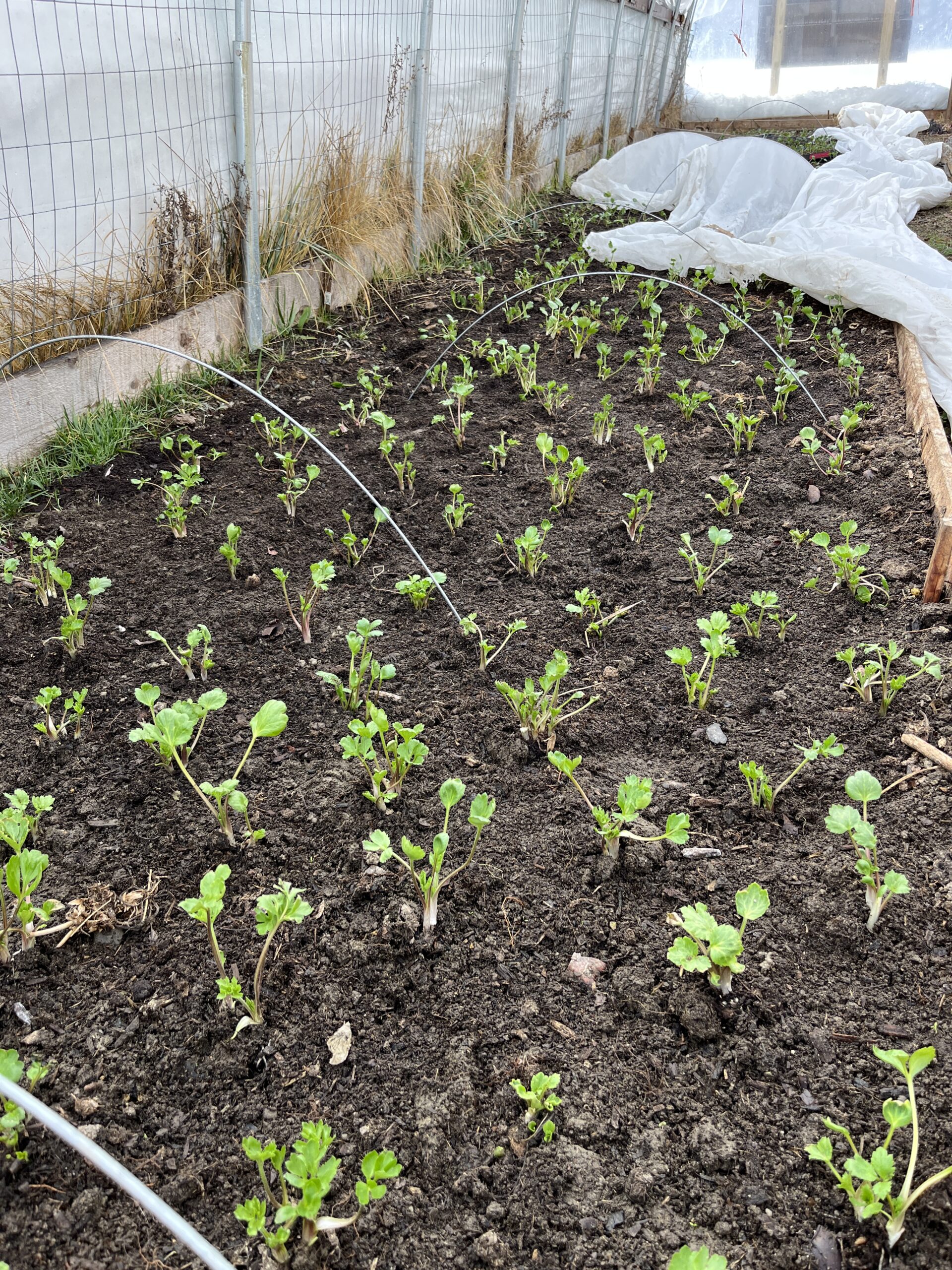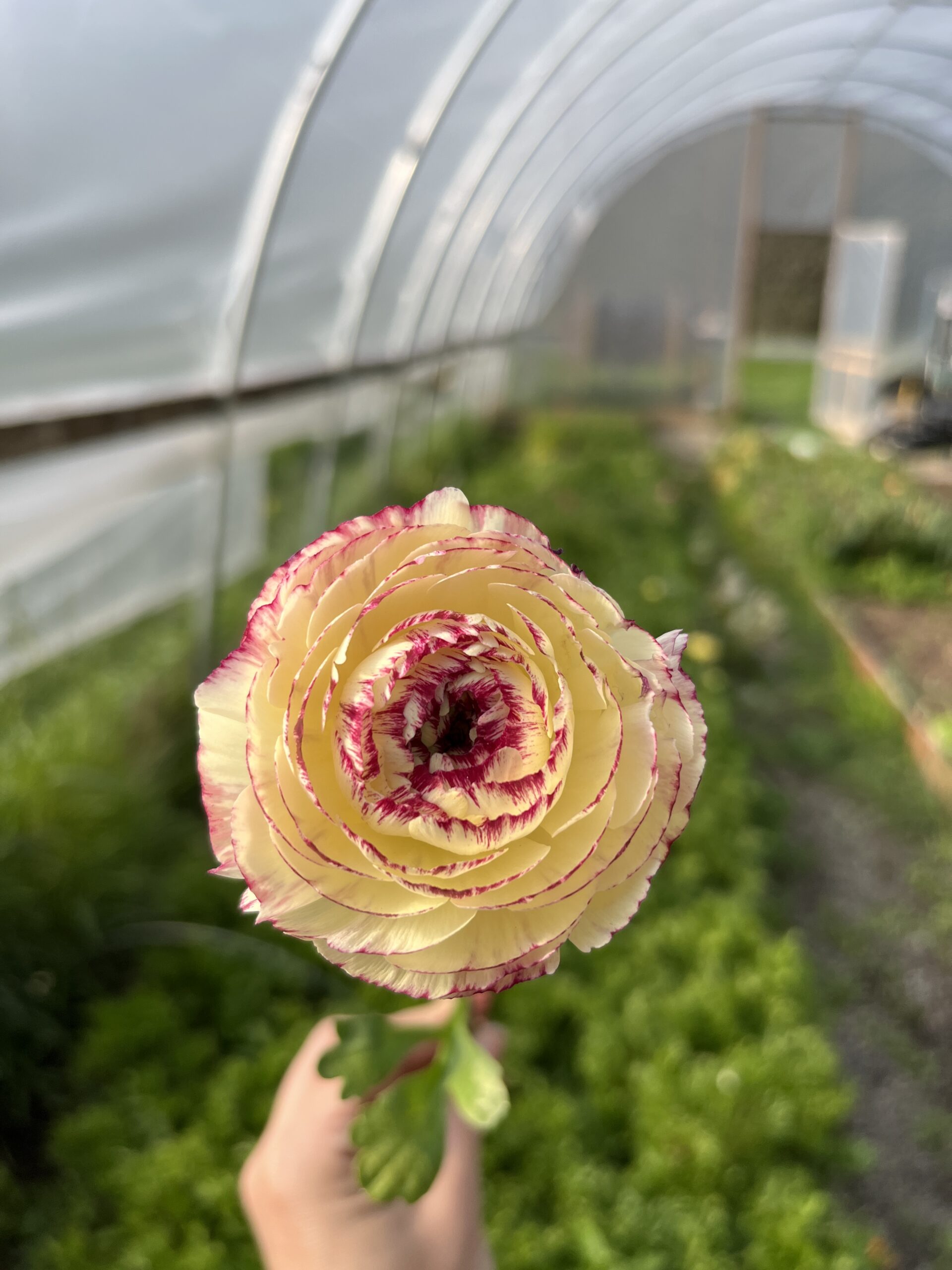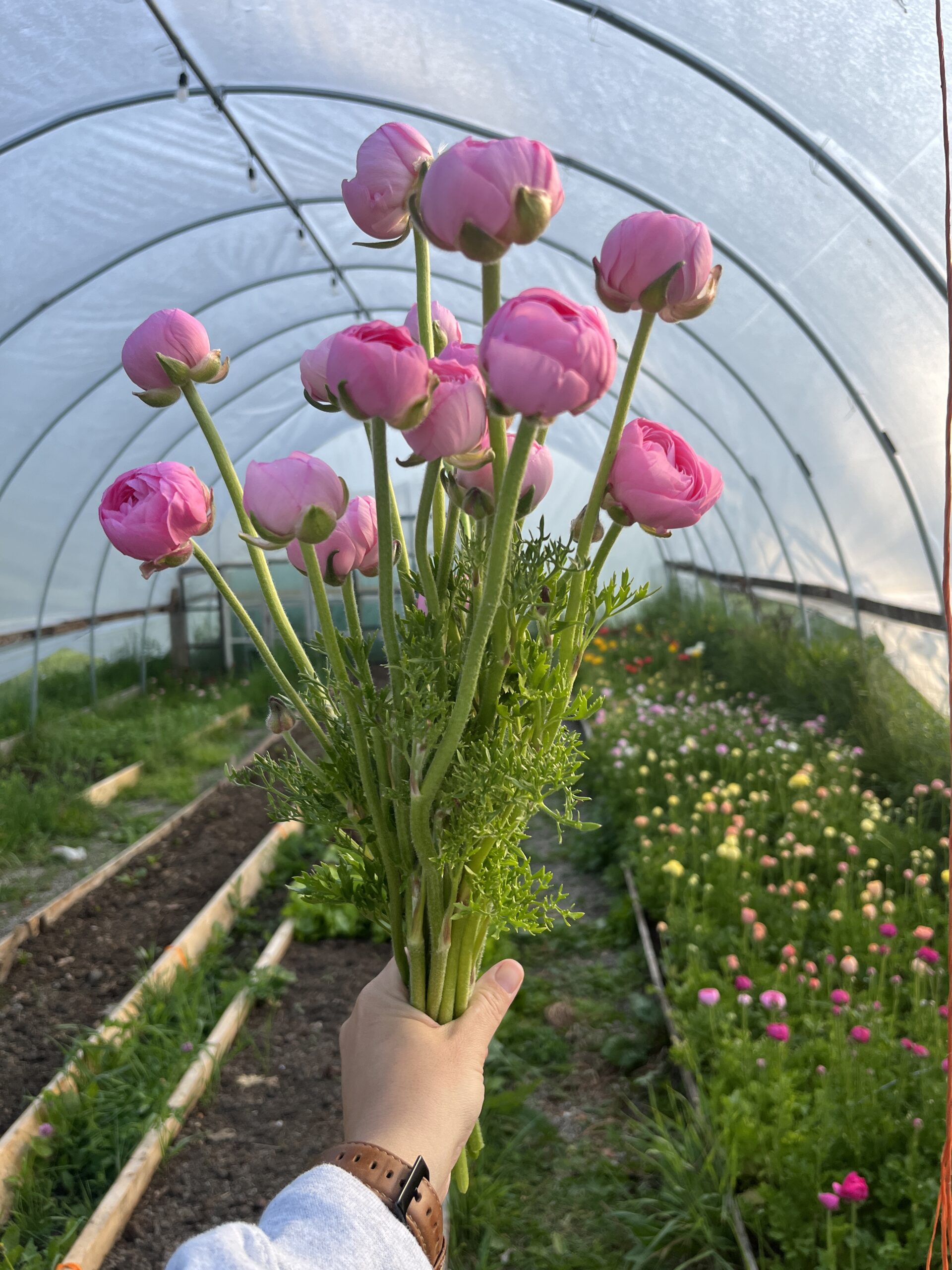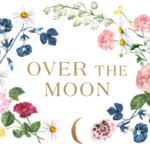Ahhh, ranunculus. So beautiful, so fickle. Most of the detailed, step-by-step information readily available regarding these plants is for more temperate climates, so I thought it would be helpful to share what has worked for me, growing in an area with harsher winters. That said, there will be good years & bad years. A long, cool spring could have you swimming in blooms while an early May heat wave could fry them all before them they really get started. You just gotta roll with it.
When growing anything, it’s important to always important understand the plants ideal growing conditions including temperature (obviously) and day-length. Ranunculus are a cool weather, lower-light crop, so the key is to get the plants going early enough that they’ll bloom before the days get too long & hot temps start to set in. For us, that means starting plants indoors in mid winter and planting out into an unheated hoop house once (hopefully) the coldest temps have passed. A minimally heated house would be ideal, but we work with what we’ve got amirite?
Before we get into it – some things to note:
- This timeline is based on having protected growing space (unheated hoophouse). If you’re a home gardener or don’t have access to a hoop house that’s totally fine, you’ll just want to adjust your timeline based on when you’d be able to get the plants in the ground and work backwards.
- Varieties come in different series, i.e. La Belle, Amandine, Half Clone, etc. so do a little research on the pros & cons of each series. I personally prefer the Amandines and Half Clones because they’re more heat tolerant and the flowers are larger, but you do you.
- I wouldn’t say ranuncs are hard to grow, but they do require tending, including but not limited to, covering & uncovering daily/feeding/watching for aphids/singing them love songs/harvesting regularly.
- I am not speaking gospel. There are many ways to do a thing and this just happens to be the way that works for me with my setup in coastal Southern Maine. If it warms up earlier or later where you are, adjust your timeline accordingly.
- You’ll want to get familiar with your specific climate & weather patterns. Zone 5’s & 6’s & whatevers are not created equal – knowing average monthly highs and lows in your area is of far more use to you, and crucial if you want your plants to do well.
Soak/Pre-sprout – mid January
Sort your corms into breathable bags (I like to use the mesh ones many of our other spring bulbs come in) and soak them in water for a few hours. The exact timeframe isn’t important here, you’re just looking for the corms to hydrate and plump up. 2-4 hours usually does the trick – you don’t want them to turn to mush.
Once they’re nice little plumpies, it’s time to pre-sprout. Lots of growers like to do this in open flats, and if you’re in a temperate climate and your plants will be going straight into the ground one they’ve sprouted, go for it. But since it gets cold AF here, the plants will be growing inside under lights for about a month before they transition outdoors so I do this in 50 or 72 cell trays (depending on the size of the corm). Just fill your tray halfway with moistened potting mix, plop your corms in pointy sides down, cover with more potting mix, and put your tray(s) somewhere cool (basement, closet, etc.). If you’re not pre-moistening your mix then make sure you lightly water the corms in. You want it moist enough to wake them up, but not so wet that they rot.
Check them every few days to make sure the soil hasn’t dried out (feel free to mist them if it has) and you should start to see green sprouts popping up in 1-2 weeks.
Grow on indoors – approximately 4 weeks
Once they’re starting to green out it’s time to put them under lights & treat them as you would any other seedling growing indoors, the only caveat being that they don’t need as many hours of light (8-10 seems sufficient, your electric bill will thank you). After about a month you should have nice, healthy plugs ready to go in the ground. At this stage, keeping an eye on the overnight temps is crucial. Lows are typically in the 20’s for us by late February and the plants seem to handle this fine under some heavyweight frost cloth.
Plant out – Late February/early March
If temps look good, it’s time for the plant shuffle. I know I know, hardening off your plants is super annoying and I kill hundreds of them every year because I’m a lazy bitch that doesn’t want to take the extra step, but I ALWAYS do it for the ranuncs. How I harden them off tends to vary with the weather, but usually I bring them out to the hoop house for a few hours for the first couple of days, cover them with extra frost cloth for a night or 2 after that, and then get them in the ground.
Watch them (slowly) grow – March/April
Our hoop is unheated so we need to tuck them in with frost cloth every night until temps are above freezing, usually until April, but it’s New England so I’m always prepared for a late freeze. Whether or not I uncover them during the day depends on, you guessed it, the weather so use your best judgement.
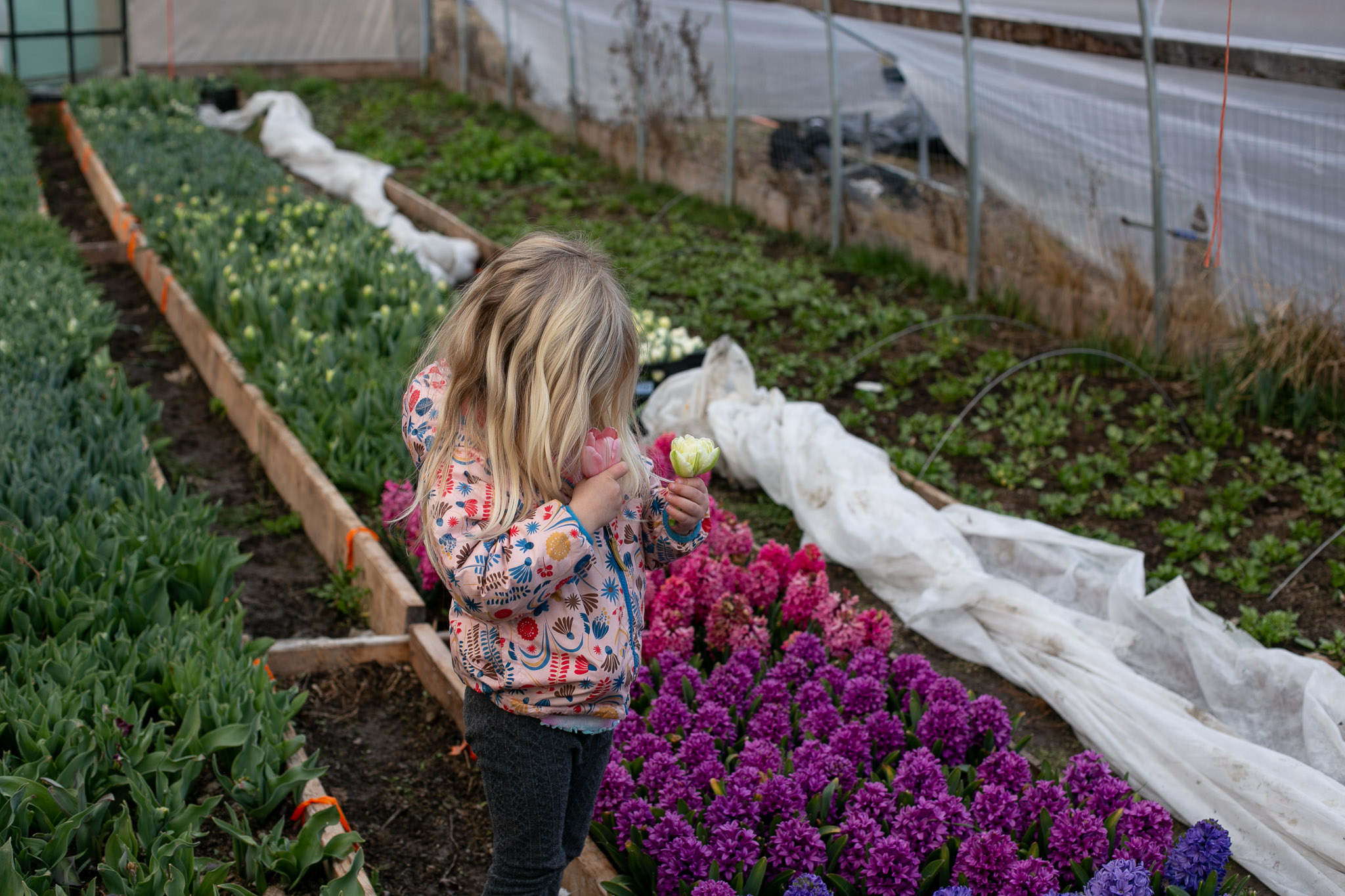
Enjoy your flowers – May-June
Mother Nature dictates when you’ll start to have flowers (more weather talk) but usually early May for me. If you have supplemental heat in your tunnel it could be earlier, it all depends. Last year we were reallllly bumping mid-May to early June. Like drowning in ranunculus it was amazing.
That’s a wrap
Once summer temps set in, it’s time to say goodbye. I’ve tried to grow a second succession outdoors with less than stellar results and dropped the ball on a fall succession I had planned last season, but maybe 2024 is my year.
On saving corms: If they’re unprotected varieties you can, but I typically want to re-plant the bed quicker than the process would allow. I noticed a lot of the ones we left in the ground have resprouted & are growing pretty well so TBD if the overwintered corms flower earlier than the ones planted in late winter.
On overwintering: While I probably could fall plant, I haven’t given it much thought. Having them in the ground means I’d have to keep an eye on them in the thick of winter and I’m just not interested at this point. We’ll see.
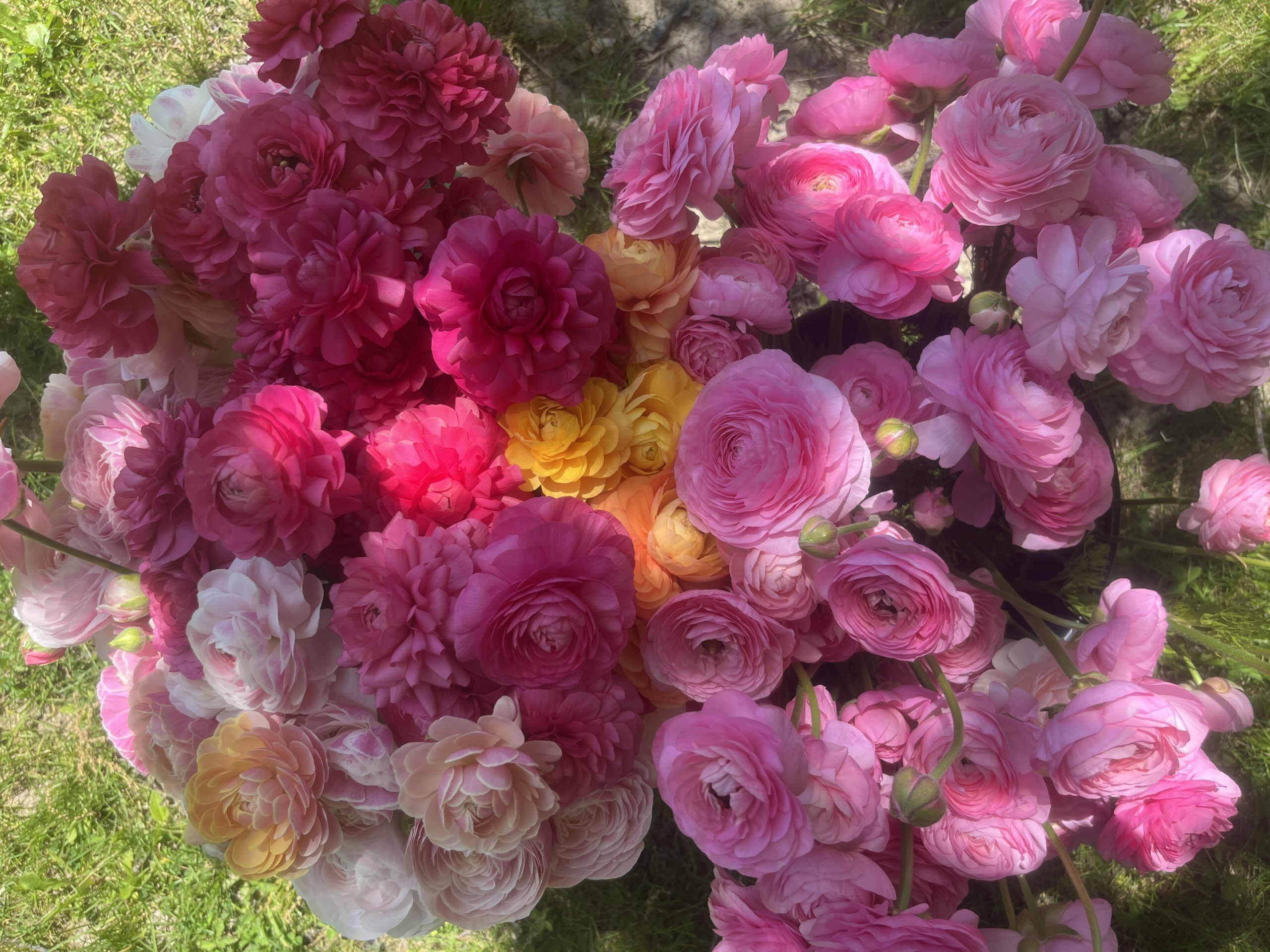
Drop your questions in the comments, and if you grow ranunculus outdoors in a similar climate I’d love to hear how it’s gone!

